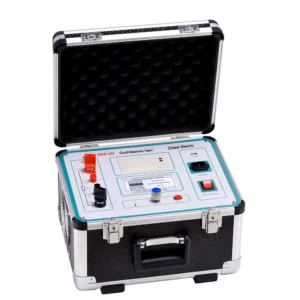Ground resistance testing and moisture analysis are two distinct methods used for different purposes, so it’s important to understand their differences and how they compare:
- Purpose:
- Ground resistance testing: This method is primarily used to assess the effectiveness of grounding systems, such as those in electrical installations, to ensure safety and proper functioning.
- Moisture analysis: Moisture analysis, on the other hand, is used to measure the moisture content within a material, substance, or environment. It is commonly employed in various industries such as food processing, pharmaceuticals, construction, and environmental monitoring to ensure product quality, safety, and compliance with standards.
- Measurement Parameter:
- Ground resistance testing: The main parameter measured is the electrical resistance between the grounding system and the Earth. This measurement helps determine the system’s ability to dissipate electrical faults and maintain safety.
- Moisture analysis: Moisture analysis measures the amount of moisture present in a substance, often expressed as a percentage of the total mass or volume. This information is critical for assessing product quality, stability, and performance.
- Methodology:
- Ground resistance testing: Typically involves the use of specialized equipment such as ground resistance testers, ground rods, and test leads. ground resistance tester The tester applies a known current to the grounding system and measures the resulting voltage drop to calculate the resistance.
- Moisture analysis: Various methods are available for moisture analysis depending on the nature of the sample and the level of accuracy required. Common techniques include Karl Fischer titration, gravimetric analysis, infrared moisture analysis, capacitance-based methods, and others.
- Application Areas:
- Ground resistance testing: Commonly used in electrical engineering, construction, telecommunications, and other industries where grounding systems are crucial for safety and proper operation.
- Moisture analysis: Widely applied across diverse industries including food and beverage, pharmaceuticals, construction materials, agriculture, and environmental science to monitor and control moisture levels in products, raw materials, and environments.
- Interpretation of Results:
- Ground resistance testing: Results are interpreted in terms of the grounding system’s safety and effectiveness. Lower resistance values indicate better grounding and lower risk of electrical hazards.
- Moisture analysis: Results are interpreted based on product specifications, industry standards, or regulatory requirements. Deviations from acceptable moisture levels can indicate potential quality issues, safety concerns, or compliance issues.
In summary, while ground resistance testing and moisture analysis are both important techniques in their respective domains, they serve different purposes and employ distinct methodologies. Each method has its own set of equipment, measurement parameters, and applications, and they are not directly comparable in terms of their utility or effectiveness for moisture analysis.
